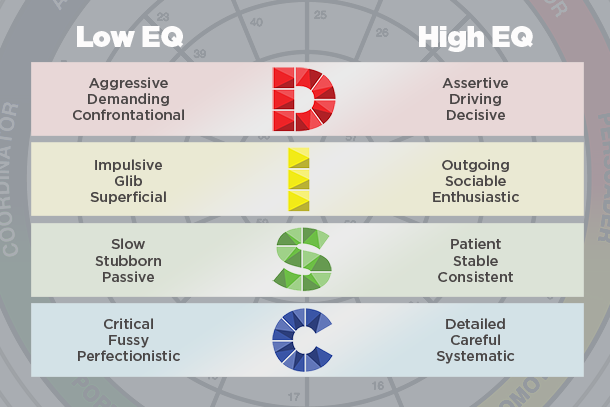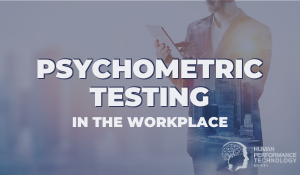The Biggest Problem With the DISC Assessment
“I suppose it is tempting, if the only tool you have is a hammer, to treat everything as if it were a nail.”— Abraham Maslow, The Psychology of Science (1966), p15
DISC is a widely used and versatile tool — a favourite so much loved across the globe that it is sometimes the one-and-only assessment brought into play by consultants and talent management professionals.
This is a problem.
While the DISC assessment is beautifully useful in its own right, it has limits. Namely, DISC is limited to measuring a single dimension of human complexity: behaviour. For anyone whose goal it is to get their head around the science of human potential and get the best out of leaders and teams, this element is clearly an indispensable piece of the jigsaw. So what's the problem?
The problem emerges, and it emerges often when a practitioner has received substandard training in talent metrics, when a single-dimensional assessment (such as DISC) becomes the proverbial hammer that, for its wielder, warps all human development issues into a landscape of nails. It’s long past time DISC-only users address the biggest DISC malpractice problem: the problem of the missing whole.
To appreciate the significance of this problem and the importance of taking a multi-dimensional perspective, let’s examine the impact that two extra dimensions — motivators and emotional intelligence — have on behaviour and how their arrival on the scene completely changes the game and exposes the danger of walking into an organisation as an Assessor With Hammer Only (AWHO).
DISC and EQ
Those who have used DISC for any length of time will be aware that two individuals can share exactly the same DISC scores and yet somehow come across as completely different people when meeting them in person. Naturally the question may be asked: what gives?
EQ, for one thing.
Emotional intelligence (EI or EQ) is important to understand because it forms the basis of social effectiveness and has the power to bring out the best — and worst — DISC tendencies. As the table below shows, a person who is highly emotionally intelligent will tend to exhibit more of the positive behavioural tendencies commonly associated with that DISC style, whereas a person low in emotional intelligence will likely exhibit more of the common shortcomings.

Imagine working for a high D manager with very high EQ in contrast to one with extremely low EQ. (Maybe you don’t have to imagine.) One manager may strike you as Leadership Personified, while the other may at times seem like they want to strike you with a chair. Just because two people share the same DISC style, it does not mean performance will share any pattern of resemblance.
DISC and Motivators
To further explore the importance of going beyond DISC, below are two scenarios (highly simplified for the purpose of illustration) to show the impact of Motivators: arguably the most powerful and important element of personality.
In the first scenario, we have a candidate at a job interview eliciting information from the hiring manager. How the candidate elicits information is a function of their behavioural style. In this case, D is the primary style and thus what we hear tends to be direct and to the point (“Tell me about…”).

But what does this candidate care about most?
DISC doesn’t tell us, however it's here where a common (and dangerous) mistake is made by DISC-only practitioners, which is to draw motivational assumptions based solely on behavioural data. To reveal what drives someone’s behaviour and really makes them tick, we need to pair the DISC profile with a motivational profile. In the interview example above, we have included six core motivators (based on the TTISI Motivators assessment), with each domain indicating a separate and distinct area of interest.
If we ask “what motivates a D?” a DISC-only practitioner may assume the D wants results, which isn’t technically wrong, but a D who is most strongly motivated by Utility (a drive for results in the form of money, ROI, and benefits for oneself) is quite unlike a D who is most strongly driven by Helping Others (a drive for results that serve and benefit others). While two Ds may sound and act similar on the surface, when we peel back the layers we realise that we're actually dealing with two radically different creatures, in the same way that Gordon Gekko (Wall Street) shares a similar forceful, fiery communication style to Princess Leia (Star Wars), but the two are nothing alike in their life ambitions.
In another scenario, we have a team member with S as their primary behavioural style sharing ideas at work. In contrast to the D style, and rather than telling their manager precisely what changes they’d like to discuss, the S style approaches their goal more indirectly (“Can I suggest…).

Motivators determine the direction of the questions and, as you may have noticed, they change our entire understanding of the individual. While the DISC dimension explains how a person communicates, the motivational dimension explains why a person moves into action. The why changes everything. To borrow a memorable line from a definitively arrogant and elitist yet still surprisingly likeable movie villain (the Merovingian from The Matrix Reloaded): “Why is the only real source of power. Without it, you are powerless.”
Together: DISC, Motivators, and EQ
When we bring emotional intelligence back into the picture, we have the ability to see why, in one scenario, a candidate with a high D, who is hungry for Power, with low-as-low-can-go EQ could be equivalent to welcoming a wrecking ball into your organisation, and see why, in another scenario, hiring a salesperson with a high I, who is utterly obsessed with Utility, with off-the-charts EQ could be the equivalent of welcoming the highest revenue increase your company has ever seen in a single year.
There are many more combinations and common mistakes that we could delve into, but even with just a few basic examples it’s possible to see how much insight we’re missing when we don’t go any deeper than DISC. Conversely, when we have access to, and are trained to identify the connections between multiple assessments, we’re far better equipped to see what’s really going on, to make truly well-informed decisions about talent, and avoid the terrible fate of turning into a hammer-only practitioner.

Theo Winter
Client Services Manager, Writer & Researcher. Theo is one of the youngest professionals in the world to earn an accreditation in TTI Success Insight's suite of psychometric assessments. For more than a decade, he worked with hundreds of HR, L&D and OD professionals and consultants to improve engagement, performance and emotional intelligence of leaders and their teams. He authored the book "40 Must-Know Business Models for People Leaders."



We Would Like to Hear From You (2 Comments)